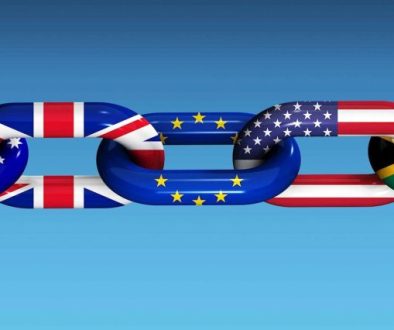Author: Dr. Soha Maad
INTRODUCTION
Digital transformation and the digital economy are the pillars for sustainable growth. However, one of the main striking challenge is the difference in the perception of nations of what digital transformation and digital economy are. Each country is conceiving digital transformation in its own way depending on its capacities, resources, and ecosystems. Moreover, within a single nation, various institutions are conceiving digital transformation in their own ways, putting their own digital transformation strategies, and implementation roadmaps.
The concept of digital economy linked or a by-product of the digital transformation is also varying across countries. Hence it is difficult to put global benchmarks for digital transformation and compare growth in digital economies.
A Global Digital Economy Platform GDEP aims at unifying practices, helping to put benchmarks, and leading to global sustainable growth.
THE FRAMEWORK
We hereby propose a simple and straightforward three tiers framework for a Global Digital Economy Platform (GDEP):
Tier1: GROW
- KNOWLEDGE
- RESOURCES
- FINANCES
Tier 2: BUILD
- APPLICATIONS
- TOOLS
- INFRASTRUCTURES
Tier 3: DEPLOY
- ACROSS SECTORS
- ACROSS COMMUNITIES
- ACROSS COUNTRIES
This GBD (GROW – BUILD – DEPLOY) framework is supported by a DASHBOARD tracking performance and measuring SUSTAINABLE GROWTH indicators.
Below we briefly describe each tier and we elaborate on each tier in subsequent future articles.
TIER 1 GROW – KNOWLEDGE
The digital transformation and the digital economy changed the job market landscape. New digital skills are needed and non-skilled labor are opted out. New jobs are created while others are disappearing. More complex technological skills are required hence the need to grow skill and knowledge to stand up to the digital transformation challenge. New technology solutions and application are emerging but we need to figure out use and benefit. The digital economy and the digital transformation are widening the digital divide and social distancing is rising. We need to grow knowledge and raise awareness to reduce the digital divide.
The key to address the digital transformation and digital economy jobs and skills challenges is to GROW KNOWLEDGE – learn and educate:
- Learn to integrate in the job market
- Learn to innovate
- Learn to deploy and implement digital solutions
- Learn to integrate in the digital society
- Learn to wipe the digital divide
- Learn to lead the digital transformation
- Learn to govern the digital economy
Education infrastructures need to be transformed and adapted to the digital economy needs. New education models and modes of delivery are the way forward … we have to catch up with the education trend.
TIER 1 GROW – RESOURCES
Wealth of resources are generated by the digital economy and digital transformation including data, products and services.
Technologies and generated data are the drivers of change and transformation in the digital economy. The key is to consolidate and integrate these resources.
New technologies are continuously emerging. Below we briefly overview some of the main technologies behind the digital transformation. These technologies are generally designated as technologies of the fourth industrial revolution (Industry 4.0) and they include:
- Artificial Intelligence: Artificial intelligence involve the analysis and filtration of huge amounts of incoming information from different types of sensors to assist the interpretation and suggestion of the most recommended course of action.
- Machine Vision: is technology and methods used to extract information from an image on an automated basis, as opposed to image processing, where the output is another image. The information extracted can be used for such applications as automatic inspection and robot and process guidance in industry, for security monitoring and vehicle guidance.
- Augmented Reality: Augmented reality (AR) is an interactive experience of a real-world environment whereby the objects that reside in the real-world are “augmented” by computer-generated perceptual information. Augmented reality is related to two largely synonymous terms: mixed reality and computer-mediated reality. Augmented reality is largely used in the entertainment and gaming businesses, knowledge sharing, educating, managing the information flood and organizing distant meetings. Augmented reality is also transforming the world of education.
- Big Data: Big data is the large volume of data, both structured and unstructured, generated by businesses on a day-to-day basis. Big data can be analyzed for insights that lead to better decisions and strategic business moves.
- Internet of Things: The Internet of things (IoT) is the network of physical devices, vehicles, home appliances, and other items embedded with electronics, software, sensors, actuators, and connectivity which enables these things to connect, collect and exchange data.
- Business Intelligence: Business Intelligence BI basically relies on transforming raw data into usable, valuable and actionable information for decision-making. It can be classified as a kind of data-driven decision support system.
- Bitcoin: Bitcoin is a crypto currency, a form of electronic cash. It is a decentralized digital currency, without a central bank or single administrator that can be sent from user-to-user on the peer-to-peer bitcoin network without the need for intermediaries. Transactions are verified by network nodes through cryptography and recorded in a public distributed ledger called a Blockchain.
- Blockchain: The bitcoin Blockchain is a public ledger that records bitcoin transactions. It is implemented as a chain of blocks, each block containing a hash of the previous block up to the genesis block of the chain. A network of communicating nodes running bitcoin software maintains the Blockchain.
- 3D printing or additive manufacturing: is a process of making three dimensional solid objects from a digital file. The creation of a 3D printed object is achieved using additive processes. In an additive process an object is created by laying down successive layers of material until the object is created.
TIER 1 GROW – FINANCES
Financing the digital transformation is important to leverage the advantages and tap the potential of digital transformation. We need to grow and digitally enable investment in:
- Innovation
- Start-ups
- Digital ecosystem of institutions
- Policy making and regulations
TIER 2 BUILD: APPLICATIONS – TOOLS – INFRASTRUCTURES
Fourth Industrial Revolution Technologies are growing in size and complexity. We need to turn these technologies and deploy them in applications, tools and services for all devices and build intelligent digital networks of things and people forming the supporting infrastructure.
Industry 4.0 technologies triggered a series of 4.0 application domains such as Banks 4.0, Health 4.0, Work 4.0, and Global Supply
Chain 4.0, Manufacturing 4.0, Trade 4.0 etc. This reflects a profound impact of the digital transformation on every aspect of life. In the 4.0 realm, potential, challenges and threats arise. The potential include promised progress and interconnectivity. The challenges are the complexity and the needed change in all practices and up skill. The threats are Cybersecurity, misuse, and lack of governance and ethical framework.
TIER 3 DEPLOY: ACROSS SECTORS – ACROSS COMMUNITIES – ACROSS COUNTRIES
All economic sectors are concerned with the digital transformation and are part of the digital economy. We need to deploy application, tools, and networks across all economic sectors and we need to grow knowledge to serve all economic sectors in the digital transformation realm. All communities should be integrated and part of the digital transformation. Distant and minor communities should be empowered by the needed skills and resources to ensure social inclusion for all.
DASHBOARD
The DASHBOARD is a crucial component of the Global Digital Economy Platform GDEP it is useful for tracking performance and measuring SUSTAINABLE GROWTH indicators. Novel metrics quantitative and qualitative are to be developed to assess impact of the digital economy on sustainable growth and to identify best practices and establish digital economy benchmarks across countries.



